Kashiwagi Castle
-Border fortress built with advanced technology for survival-
Overview
Name: Kashiwagi castle (Kashiwagi-jo)
Alias:
Place: Oshio Kita-Shiobara village, Fukushima
Location: 37.666470081771536, 139.97586678255942
Type: Hill Castle
Built: 1584
Remaining remnants: Stone walls, clay walls and dry moats
Title:
Kashiwagi castle (柏木城) is built at the river terrace of Oshio-gawa river, which is a tributary of Aga-gawa river flows westward at the north of Mt. Bandai, at the northeastern edge of Aizu basin. Now Aizu Wakamatsu city which is the center of Aizu basin and Yonezawa city at Yonezawa basin is connected by Route 121 passing Otoge-pass, but this route is a steep mountain path constructed on and after Meiji era.
In medieval era, Yonezawa Kaido road which connected Aizu Wakamatsu city and Yonezawa city ran along with Oshio-gawa river, passed Toriage-toge pass then rounded Lake Hibara and crossed Shirafu-toge pass was a main route to connect both city. Especially Aizu Wakamatsu city and Yonezawa city were a main base of Ashina clan and Date clan respectively, thus this route was an important one from military perspective for both clan.
Kashiwagi castle was built by Moritaka Ashina (1561-1584) in 1584. Ashina clan had been a small local clan for long time, but since the latter half of 15th century, they started to unify Aizu basin and expand their territory. By 1500, Ashina clan built Kurokawa castle (later renamed to Aizu Wakamatsu castle) and governed whole Aizu basin.
However, Ashina basin was surrounded by traditional strong lords such as Date clan at Yonezawa basin, Nagao (later Uesugi) clan at Echigo province (Niigata prefecture) or Satake clan at Hitachi province (Ibaraki prefecture. Traditionally Date clan had been a leader of Mutsu province, and Ashina clan subordinated to Date clan.
But around 1550, each surrounding clan had trouble and lost their power temporally. In Nagao clan, after the death of former leader Tamekage Nagao (1489-1543), in addition to revolt of local lords, there was a conflict of leader position between two son of Tamekage, Harukage Nagao (1509-1553), and Kagetora Nagao (1530-1578) later known as Kenshin Uesugi.
For Satake clan, they escaped long dark period and started to expand their territory, but their priority was to unify Hitachi province at first. Above all, in Date clan, there was a large internal conflict called as Tenbun no Ran from 1542 to 1548, between Tanemune Date (1488-1565) and Harumune Date (1519-1578), father and son of family, and finally Harumune won.
Moriuji Ashina (1521-1580), leader of Ashina clan at that time, supported Harumune and beat surrounding local lords supported Tanemune. Moriuji adopted mercantile policy at his capital Aizu Wakamatsu city to increase his wealth, and based on this power he aggressively attacked outlying lords such as Tamura clan, Nikaido clan or Ouchi clan at Nakadori area.
Among Date clan suffered from aftereffect of conflict, Moriuji rapidly expanded his sphere and temporally became the ruler of south part of Mutsu province. Moriuji also struggled with Uesugi clan or Satake clan in alliance with other large lords such as Hojo clan at Sagami province (Kanagawa prefecture) or Takeda clan at Kai province (Yamanashi prefecture.
After the death of Kenshin Uesugi at 1578, Moriuji attempted to intervene the internal conflict of Uesugi clan for the successor of Kenshin called as Mitate no Ran. Moriuji brought the peak period for Ashina clan. But internally retainers of Ashina clan became dissatisfied with Ashina clan for the burden of continuous campaign. Furthermore, Moriuji lost his son Morioki Ashina (1547-1574) in youth without successor, and had to succeed to Moritaka Ashina, who was originally a hostage from Nikaido clan.
Subsequent to the death of Moriuji in 1580, Ashina clan fell into decline because of internal problems and external pressures. Finance of Ashina clan became tight, and intervention to Echigo province did not make any result for long time. Furthermore, Date clan recovered their power under Harumune Date (1544-1585), and after the accidental death of Harumune in 1585, his successor Masamune Date (1544-1585) broke the friendship with Ashina clan and started expansion toward south.
To cope with this severe situation, Moritaka Ashina tried to secure his territory by large castles. As Kurokawa castle (later Aizu Wakamatsu castle) which was the main base of Ashina clan was a medieval residence not suitable for battle, then Moritaka expanded Mukaihaguroyama castle which was originally built as a retirement place of Moriuji into a large mountain fortress as a last resort.
Furthermore, Moritaka tried to blockade two road from Yonezawa basin to Aizu basin by Kashiwagi castle at west and Inawashiro castle at east. Kashiwagi castle, Tsurumine castle which was a part of Inawashiro castle and Mukaihaguroyama castle have a similar elements such as square shaped main area with clay walls, stone walls at the entrance, folded path gate and Umadashi style buffer area.
At the period of Moriuji Ashina, Ashina clan had communication with central powers such as Oda clan, Takeda clan or Hojo clan. Even though declined, advanced technologies brought from central power was still a strength of Ashina clan. Ashina clan planned to secure their territory by triangle of secure three castles, and show their strength to retainer and surrounding warlords.
As Yonezawa Kaido road was an expected front toward Date clan, Ashina clan brought every resource to Kashiwagi castle. Total size of Kashiwagi castle exceeded one kilometer long and 500 meter wide, and slopes of the hill is securely protected by layers of terraces and vertical dry moats.
Central area of the castle is located near the south edge of terrace, which is an oblong shaped one of about 120 meter long and 60 meter wide. There is a square shaped ground separated by line of stones at the northwest of the area, and there might be a residence of commander at this place. At the northeastern edge, there is a main gate of this area which is protected by stone walls at both side and barrack over the gate.
At the west and south of central area, there are terraces separated by clay walls and dry moats connected by gates. At the south of central area, there is another Masugata-style gate which is secured by stone walls which might be the backside gate of the castle. As this side is nearly same height with outside of castle, water moat might guarded southern line of the castle. At the below of north slope of central area, there was outer front gate of this castle also securely guarded by stone walls.
At the east of the castle, ahead of dry moat, there is a circular Umadashi area which is similar to the one of Takeda clan. Ahead of this Umadashi area, there is terrace built utilizing ridge of the hill, which might work another Umadashi buffer area. At the east of these core areas, many terraces continue along the cliff over 800 mater. Entrance from hillside into these areas were also protected by layers of stone walls and folded path gate. Long line of forts built by advanced technology was as if the Maginot-line.
However, Ashina clan could not stabilize their situation. In 1584, retainers of Ashina clan rebelled to Moritaka, and once Moritaka suppressed this but soon was assassinated by other retainer. His son born from the princess of Date clan nominally succeeded Ashina clan but soon died in ill, then Ashina clan became severe internal conflict to adopt the person of Date clan or Satake clan.
Finally Ashina clan chose Satake clan then Yoshihiro Ashina (1575-1631), the son of Yoshishige Satake (1547-1612) was adopted by Ashina clan and succeeded leader position in 1587. But at this time Satake clan continued severe battle with Hojo clan and could not support Ashina clan well. On the other hand, Masamune Date who was rejected from this conflict started fierce attack toward Ashina clan.
In 1589, because of the plot of Masamune Date, Morikuni Inawashiro (1536-?) turned to Date clan. Triangle of three castles collapsed, and Date army at last approached to Aizu basin from east. Looking at this situation, alliance of Ashina army and Satake army intercepted Date army at Suriagehara, but Ashina army which was low morale and lacked unified command suffered severe defeat at the battle of Suriagehara before Masamune.
Looking at this defeat, Yoshihiro Ashina left Kurokawa castle then escaped to Satake clan, thus the history of Ashina clan as a warlord of Aizu basin ended at this point. At this time Kashiwagi castle still resisted to Date clan, but after the defeat the commander of Ashina clan burnt down the castle and left it. In addition to its shape, the fact of no use at actual invasion at another front is alike the Maginot-line.
After the fall of Ashina clan, as Date clan, Gamo clan and Uesugi clan held both of Yonezawa basin and Aizu basin, this area had not been the border over 10 years then Kashiwagi castle was not used any more.
Type: Hill Castle
Built: 1584
Remaining remnants: Stone walls, clay walls and dry moats
Title:
Brief History
Kashiwagi castle (柏木城) is built at the river terrace of Oshio-gawa river, which is a tributary of Aga-gawa river flows westward at the north of Mt. Bandai, at the northeastern edge of Aizu basin. Now Aizu Wakamatsu city which is the center of Aizu basin and Yonezawa city at Yonezawa basin is connected by Route 121 passing Otoge-pass, but this route is a steep mountain path constructed on and after Meiji era.
In medieval era, Yonezawa Kaido road which connected Aizu Wakamatsu city and Yonezawa city ran along with Oshio-gawa river, passed Toriage-toge pass then rounded Lake Hibara and crossed Shirafu-toge pass was a main route to connect both city. Especially Aizu Wakamatsu city and Yonezawa city were a main base of Ashina clan and Date clan respectively, thus this route was an important one from military perspective for both clan.
Origin of Kashiwagi castle and Ashina clan
Kashiwagi castle was built by Moritaka Ashina (1561-1584) in 1584. Ashina clan had been a small local clan for long time, but since the latter half of 15th century, they started to unify Aizu basin and expand their territory. By 1500, Ashina clan built Kurokawa castle (later renamed to Aizu Wakamatsu castle) and governed whole Aizu basin.
However, Ashina basin was surrounded by traditional strong lords such as Date clan at Yonezawa basin, Nagao (later Uesugi) clan at Echigo province (Niigata prefecture) or Satake clan at Hitachi province (Ibaraki prefecture. Traditionally Date clan had been a leader of Mutsu province, and Ashina clan subordinated to Date clan.
But around 1550, each surrounding clan had trouble and lost their power temporally. In Nagao clan, after the death of former leader Tamekage Nagao (1489-1543), in addition to revolt of local lords, there was a conflict of leader position between two son of Tamekage, Harukage Nagao (1509-1553), and Kagetora Nagao (1530-1578) later known as Kenshin Uesugi.
For Satake clan, they escaped long dark period and started to expand their territory, but their priority was to unify Hitachi province at first. Above all, in Date clan, there was a large internal conflict called as Tenbun no Ran from 1542 to 1548, between Tanemune Date (1488-1565) and Harumune Date (1519-1578), father and son of family, and finally Harumune won.
Peak period of Ashina clan
Moriuji Ashina (1521-1580), leader of Ashina clan at that time, supported Harumune and beat surrounding local lords supported Tanemune. Moriuji adopted mercantile policy at his capital Aizu Wakamatsu city to increase his wealth, and based on this power he aggressively attacked outlying lords such as Tamura clan, Nikaido clan or Ouchi clan at Nakadori area.
Among Date clan suffered from aftereffect of conflict, Moriuji rapidly expanded his sphere and temporally became the ruler of south part of Mutsu province. Moriuji also struggled with Uesugi clan or Satake clan in alliance with other large lords such as Hojo clan at Sagami province (Kanagawa prefecture) or Takeda clan at Kai province (Yamanashi prefecture.
After the death of Kenshin Uesugi at 1578, Moriuji attempted to intervene the internal conflict of Uesugi clan for the successor of Kenshin called as Mitate no Ran. Moriuji brought the peak period for Ashina clan. But internally retainers of Ashina clan became dissatisfied with Ashina clan for the burden of continuous campaign. Furthermore, Moriuji lost his son Morioki Ashina (1547-1574) in youth without successor, and had to succeed to Moritaka Ashina, who was originally a hostage from Nikaido clan.
Sudden decline and build of triangle castles
Subsequent to the death of Moriuji in 1580, Ashina clan fell into decline because of internal problems and external pressures. Finance of Ashina clan became tight, and intervention to Echigo province did not make any result for long time. Furthermore, Date clan recovered their power under Harumune Date (1544-1585), and after the accidental death of Harumune in 1585, his successor Masamune Date (1544-1585) broke the friendship with Ashina clan and started expansion toward south.
To cope with this severe situation, Moritaka Ashina tried to secure his territory by large castles. As Kurokawa castle (later Aizu Wakamatsu castle) which was the main base of Ashina clan was a medieval residence not suitable for battle, then Moritaka expanded Mukaihaguroyama castle which was originally built as a retirement place of Moriuji into a large mountain fortress as a last resort.
Furthermore, Moritaka tried to blockade two road from Yonezawa basin to Aizu basin by Kashiwagi castle at west and Inawashiro castle at east. Kashiwagi castle, Tsurumine castle which was a part of Inawashiro castle and Mukaihaguroyama castle have a similar elements such as square shaped main area with clay walls, stone walls at the entrance, folded path gate and Umadashi style buffer area.
At the period of Moriuji Ashina, Ashina clan had communication with central powers such as Oda clan, Takeda clan or Hojo clan. Even though declined, advanced technologies brought from central power was still a strength of Ashina clan. Ashina clan planned to secure their territory by triangle of secure three castles, and show their strength to retainer and surrounding warlords.
Structure of Kashiwagi castle
As Yonezawa Kaido road was an expected front toward Date clan, Ashina clan brought every resource to Kashiwagi castle. Total size of Kashiwagi castle exceeded one kilometer long and 500 meter wide, and slopes of the hill is securely protected by layers of terraces and vertical dry moats.
Central area of the castle is located near the south edge of terrace, which is an oblong shaped one of about 120 meter long and 60 meter wide. There is a square shaped ground separated by line of stones at the northwest of the area, and there might be a residence of commander at this place. At the northeastern edge, there is a main gate of this area which is protected by stone walls at both side and barrack over the gate.
At the west and south of central area, there are terraces separated by clay walls and dry moats connected by gates. At the south of central area, there is another Masugata-style gate which is secured by stone walls which might be the backside gate of the castle. As this side is nearly same height with outside of castle, water moat might guarded southern line of the castle. At the below of north slope of central area, there was outer front gate of this castle also securely guarded by stone walls.
At the east of the castle, ahead of dry moat, there is a circular Umadashi area which is similar to the one of Takeda clan. Ahead of this Umadashi area, there is terrace built utilizing ridge of the hill, which might work another Umadashi buffer area. At the east of these core areas, many terraces continue along the cliff over 800 mater. Entrance from hillside into these areas were also protected by layers of stone walls and folded path gate. Long line of forts built by advanced technology was as if the Maginot-line.
Further disorder and defeat
However, Ashina clan could not stabilize their situation. In 1584, retainers of Ashina clan rebelled to Moritaka, and once Moritaka suppressed this but soon was assassinated by other retainer. His son born from the princess of Date clan nominally succeeded Ashina clan but soon died in ill, then Ashina clan became severe internal conflict to adopt the person of Date clan or Satake clan.
Finally Ashina clan chose Satake clan then Yoshihiro Ashina (1575-1631), the son of Yoshishige Satake (1547-1612) was adopted by Ashina clan and succeeded leader position in 1587. But at this time Satake clan continued severe battle with Hojo clan and could not support Ashina clan well. On the other hand, Masamune Date who was rejected from this conflict started fierce attack toward Ashina clan.
In 1589, because of the plot of Masamune Date, Morikuni Inawashiro (1536-?) turned to Date clan. Triangle of three castles collapsed, and Date army at last approached to Aizu basin from east. Looking at this situation, alliance of Ashina army and Satake army intercepted Date army at Suriagehara, but Ashina army which was low morale and lacked unified command suffered severe defeat at the battle of Suriagehara before Masamune.
End of Kashiwagi castle and afterward
Looking at this defeat, Yoshihiro Ashina left Kurokawa castle then escaped to Satake clan, thus the history of Ashina clan as a warlord of Aizu basin ended at this point. At this time Kashiwagi castle still resisted to Date clan, but after the defeat the commander of Ashina clan burnt down the castle and left it. In addition to its shape, the fact of no use at actual invasion at another front is alike the Maginot-line.
After the fall of Ashina clan, as Date clan, Gamo clan and Uesugi clan held both of Yonezawa basin and Aizu basin, this area had not been the border over 10 years then Kashiwagi castle was not used any more.
Even though not so famous, its size and degree of completeness is an extraordinary among medieval castles of Tohoku region along with Mukaihaguroyama castle, far exceeding castles of Date clan. But this also shows the problem of Ashina clan and momentum of Date clan which Kashiwagi castle could not stop.
40 minutes drive from Banetsu-Jidoshado Expressway Inawashiro Bandai-Kogen interchange or Aizu-Wakamatsu interchange via Route 459 to the parking of regional community center just above from Kita-Shiobara post office. Entrance of climbing road is just at the next of parking.
Mukaihaguroyama Castle -Huge mountain castle prominent in Eastern Japan-
Inawashiro Castle -Expansion and collapse of Ashina clan-
Aizu Wakamatsu Castle -White five-story main tower endured harsh battle-
Access
40 minutes drive from Banetsu-Jidoshado Expressway Inawashiro Bandai-Kogen interchange or Aizu-Wakamatsu interchange via Route 459 to the parking of regional community center just above from Kita-Shiobara post office. Entrance of climbing road is just at the next of parking.
Related Castles
Mukaihaguroyama Castle -Huge mountain castle prominent in Eastern Japan-
Inawashiro Castle -Expansion and collapse of Ashina clan-
Aizu Wakamatsu Castle -White five-story main tower endured harsh battle-

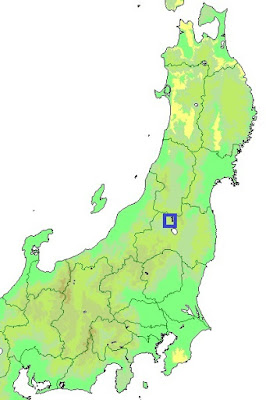

















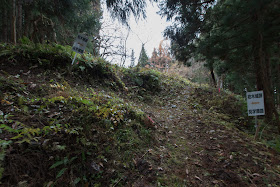




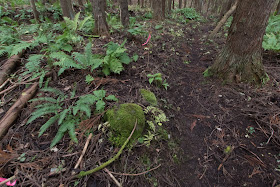

















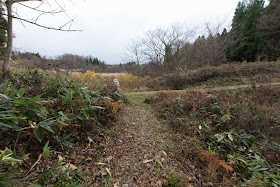

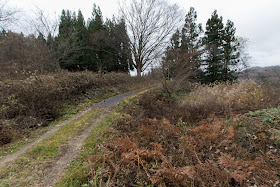








































































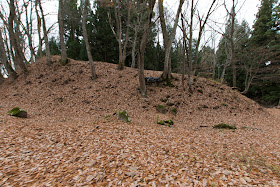




























































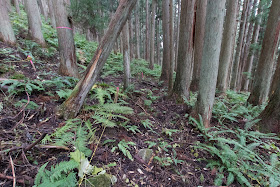






































































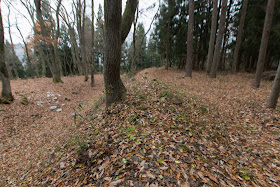













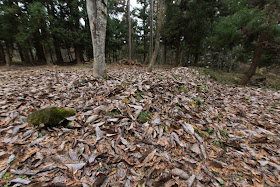




















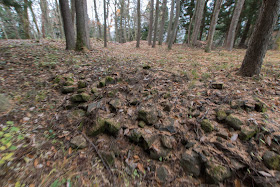












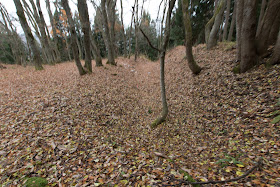
















































































































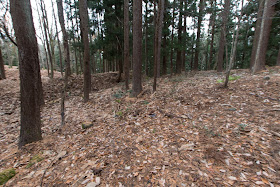







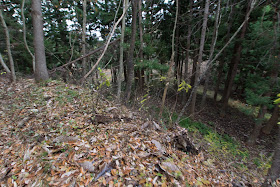









































































































No comments:
Post a Comment